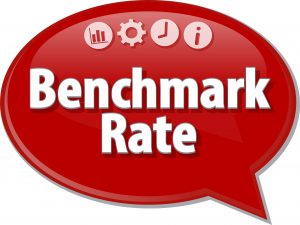 Lenders want to make sure you can afford higher mortgage payments if interest rates soar. So does the government.
Lenders want to make sure you can afford higher mortgage payments if interest rates soar. So does the government.
That’s why regulators created the mortgage qualifying rate (MQR) — a.k.a., “benchmark qualifying rate,” “benchmark interest rate” or “Bank of Canada qualifying rate.”
The MQR is the interest rate most commonly used to “stress test” mortgage borrowers.
Stress testing is the process of calculating a borrower’s debt ratio to ensure it’s not too high. Basically, a lender divides your monthly obligations by your gross monthly income (it assumes your mortgage payment is based on the MQR). It then compares that debt ratio number to an established limit, like 44%. If your debt ratio is at or below the lender’s limit, you pass the “test.”
Here are 10 other things mortgagors need to know about the mortgage qualifying rate:
- The MQR is equal to the Big 6 Banks’ typical posted 5-year fixed rate. That’s usually about 2 percentage points above the actual 5-year fixed rate that most people pay. You can find the current MQR here (look for “Conventional mortgage – 5-year”).
- Mortgage payments are generally based on the actual rate you pay (i.e., the “contract rate”), not the MQR.
- If you’re getting a mortgage that’s default insured, all lenders will stress test you using the MQR.
- In October 2017, OSFI announced that it will apply a stress test to all uninsured mortgages at federally regulated lenders, effective January 1, 2018. The stress is the greater of the MQR or 200 basis points above the contract rate.
- In actuality, most lenders are supposed to stress test you using the greater of your actual mortgage rate or the MQR, but it’s rare that your mortgage rate will exceed the MQR unless it’s a non-prime mortgage.
- You must also qualify at the MQR if you get a HELOC at a federally regulated lender.
- The MQR is typically published every Wednesday at 2:00 pm by the Bank of Canada. It takes effect (on insured mortgages) the following Monday. It equals the mode average of the Big 6 Banks’ posted 5-year fixed rates.
- Some esoterica if you’re interested: When there is no mode, the MQR is the rate closest to the simple 6-bank average. When there are multiple modes, the MQR is the mode closest to the simple 6-bank average. When there are two modes of equal distance from the simple 6-bank average, the MQR is the mode from the banks with the largest value of assets booked in Canadian dollars.
- Credit Unions aren’t required to use the MQR for uninsured mortgages but most do. For those who don’t, then other things equal, they will approve you for a bigger mortgage than a bank will. But you have to be well qualified.
- How often do rates jump 200+ bps within a five-year span? Well, ever since inflation targeting began in the early 90s (i.e., in the modern rate era), it’s happened:
- Only twice in the case of five-year fixed rates
- Only three times in the case of variable rates. In all of the above cases, rates fell to new lows promptly thereafter. (Source: Bank of Canada)
- If you want to qualify for a mortgage, there are five common ways to beat the stress test:
- Get a smaller mortgage (e.g., put more money down)
- Extend your amortization beyond 25 years (this only applies if you have an uninsured mortgage)
- Add more income (one way to do this is by adding a co-borrower to your application)
- Reduce/eliminate some of your debt payments
- Choose a non-federally regulated lender (e.g., a credit union; but prepare to pay higher interest rates).
If you want to know whether you pass your lender’s stress test, simply ask that lender (or any mortgage broker) to calculate your debt ratios. They’ll ask you some questions about your income, debts and mortgage. Then they’ll do the math.
Competent mortgage advisors can generally tell you if you qualify in about 10-15 minutes. (Note: If you own more than 1-2 properties, it’ll take them longer to do the numbers.)

 log in
log in
5 Comments
RateSpy:
Have you considered updating/revise your “The Ultimate Mortgage Checklist”, if applicable, to reflect recent changes to the mortgaging environment?
Hey Steve, Yes indeed. We’ll wait to see what OSFI decides with its B-20 underwriting rules proposal and then make the updates. Cheers…
With all these new hoops homebuyers are being expected to jump through, credit unions and other private lenders are looking like better options by the day (for those who can afford slightly higher rates).
Are any data available for how many buyers can’t get a mortgage with this new rules?
If you mean can’t get a mortgage at all, of any amount and at any price, it’s likely in the 5-10% range based on our estimates of government data.
If you mean can’t get the mortgage they could have qualified for last year, it’s closer to 15%+ overall. For high-ratio borrowers specifically, it’s probably 25%+.